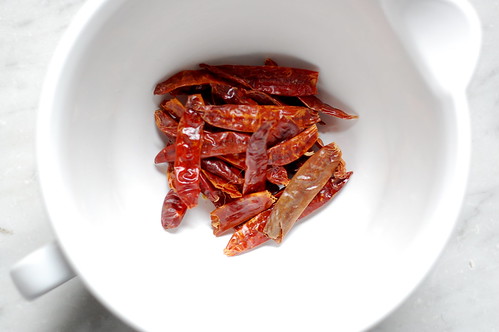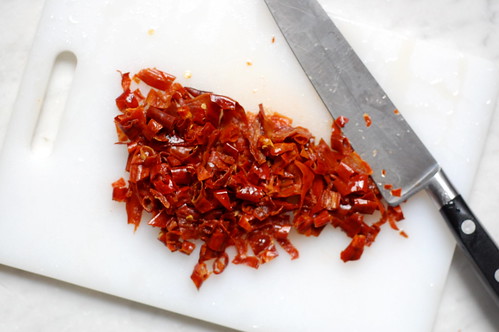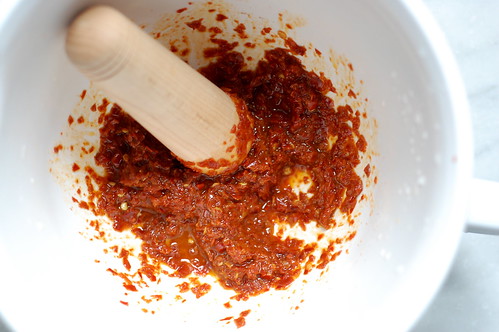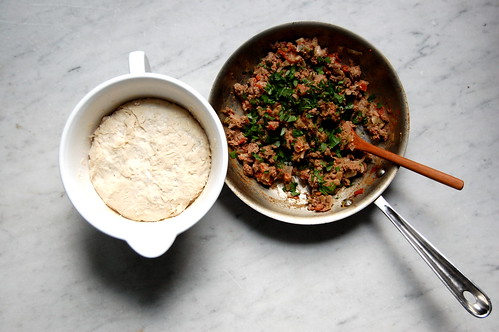
Hello from warm, sunny, smoggy, crowded Cairo! I hope you had a lovely Thanksgiving. We are just settling in here, but are lucky to have some great neighbors and colleagues who adopted us and made sure we had turkey and stuffing and pie on the holiday. Anyone who makes sure that you have pie is a pretty good friend to have if you ask me.
Before we left for Cairo, I wanted a bit of exposure to Egyptian dialect (though every native Arabic speaker understands Egyptian dialect because of all the movies and TV shows from there, I am not a native, and Egyptian is very different from my comfort level in the Levant. And certainly two years in Algiers did very little for my Arabic at all, outside of understanding Souad Massi songs.)
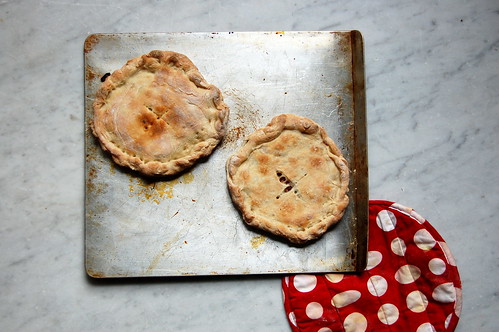
Anyway, this was basically an excuse to watch some Egyptian TV shows on YouTube, which obviously deteriorated into me watching Egyptian cooking shows. I watched a lady making homemade hawawshi حواوشى, or stuffed meat pies which are considered one of the national dishes of Egypt. Hawashi is usually made by stuffing leftover bread with a bunch of spiced ground meat and baking it, and is a way to use up slightly stale bread. The meat can be already cooked or raw, and the pies can be made in the oven or on a griddle. The lady on the cooking show, however, was making her hawawshi with freshly made dough, and explained that the filling was "Alexandria-style," which as far as I could tell just meant that it involved chile peppers.
Now that we've arrived I spotted a few hawawshis at Zooba and around on the street, but I haven't tried any to see how they compare to my homemade version. I've been too busy eating ta'amiya (Egyptian falafel) and fuul (broad beans), trying to figure out how to get to and from work, how to get groceries, unpacking our suitcases, and generally not getting lost. I hope you all are enjoying those turkey-day leftovers!
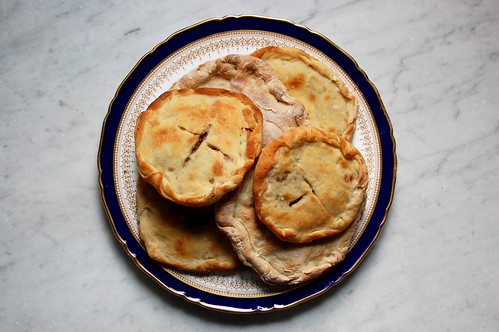
Egyptian Meat Pies (Hawawshi)
filling:
1/2 an onion, diced
1 large tomato, diced
1 jalapeno pepper, seeds removed, diced
2 cloves garlic, sliced
1 lb ground beef
1/2 teaspoon ground coriander
1/4 teaspoon paprika
salt, pepper, olive oil
dough:
3/4 teaspoon active dry yeast
1 cup warm water, plus 2-3 tablespoons more if needed
2 cups flour
1 teaspoon salt
1 teaspoon sugar
2 tablespoons olive oil
1. Make the dough: Mix the yeast and the water in a bowl. Add the flour, sugar, salt, and olive oil, and mix thoroughly. Knead the dough in the bowl until it comes together and becomes smooth. Cover the dough with plastic wrap or a damp towel and leave to rise.
2. Make the filling: Heat a splash of olive oil in a wide pan. Saute the onion until soft and translucent. Add the jalapenos, tomatoes, and garlic. Let the mixture cook over medium heat until the tomatoes have lost most of their liquid and everything is soft. Add the beef, paprika, coriander, salt, and pepper to the pan. Saute the mixture, breaking up the beef, until the beef is cooked through.
3. Preheat the oven to 425F. Prepare a baking sheet.
4. Form the dough into 8 balls and set aside. Sprinkle a work surface with flour. Using a rolling pin, roll out two dough balls into rounds. Place a heaping amount of the filling onto one round. Remember the dough will expand, so you really want to pile the filling on there. Top the meat pie with the second round of dough and pinch the edges closed. Cut a small X in the top of the meat pie. Transfer the pie to the baking sheet and repeat with the remaining dough and filling. If desired, you can brush the pie with olive oil before baking.
5. Bake the meat pies in the oven for 15-20 minutes, or until the dough becomes golden brown. Remove and serve warm.


